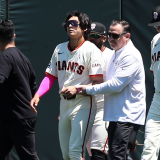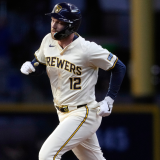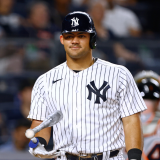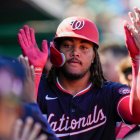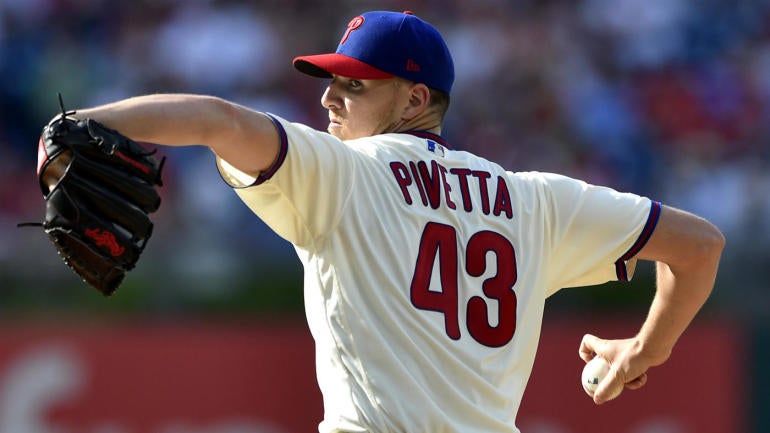
Over the weekend, the Boston Red Sox completed a four-pitcher trade with the Philadelphia Phillies, swapping relievers Brandon Workman and Heath Hembree for potential starters Nick Pivetta and Connor Seabold. The trade is the first notable deal executed by Chaim Bloom since the February blockbuster that sent Mookie Betts and David Price to the Los Angeles Dodgers. It also signifies, in a sense, the beginning of the activity linked to the August 31 trade deadline.
Because of those aspects, and because Red Sox fans could use a distraction from everything else happening this season, we decided we would take a closer look at Pivetta and Seabold. Below, you'll find our analysis of both pitchers, as well as a judgement on the trade itself.

Nick Pivetta
There are three rites of passage that introduce a baseball season: pitchers and catchers reporting; Opening Day; and, somewhere in between, Pivetta appearing in a "breakout candidates" column, the way he did in our version of the premise in spring 2019.
A season and a half later (technically), Pivetta has yet to advance. He's now a 27-year-old with a career 5.50 ERA in nearly 400 big-league innings. The only pitcher with a similar workload and a worse ERA than Pivetta since his 2017 debut is Jordan Zimmermann. Glory would not seem to be within reach, but he remains an analytics darling for a reason.
The difference between Pivetta's strikeout and walk rates (15.8 percent) is the 40th-best in the majors among pitchers with at least 350 frames since 2017. Jose Berrios, Sonny Gray, Zack Wheeler, Kyle Hendricks, and Lance Lynn are some pitchers with similar gaps. It's a simplistic measure, but pitchers who are skilled enough to amass strikeouts and avoid walks at Pivetta's pace tend to be successful. No one with a difference as high as (or higher than) Pivetta's had an ERA+ worse than 94. That's some base rate, especially considering Pivetta's ERA+ is 78.
This isn't 2003; pitching and analyzing pitching is (and is understood to be) more complex than strikeouts and walks. Still, if Pivetta is a legitimate outlier, a white crow, whose ERA will never match his peripherals, then having an explanation for why that is would be helpful.
An obvious and reasonable theory is that Pivetta's command is significantly worse than anyone else in his strikeout-walk-difference bucket, leading to his pitches being blasted more often than the average pitcher. The difference between control (throwing strikes) and command (throwing quality strikes) can be hard to pin down statistically, but his home-run rate (1.6 per nine) supports the theory. That's where the trail goes cold, in a sense, as his career exit velocity-against is 88.8 mph, or only a nose hair above the 88.2 mph league-average.
Another reasonable theory is that Pivetta is far worse with someone is on base. Under this scenario, he would allow the opposition to cash in their baserunners at a higher frequency. There's some truth to the idea that Pivetta is a worse pitcher from the stretch. For his career, he's allowed an OPS that is 12 percent worse than the league-average, according to Baseball-Reference. That would seem to be offset, at least somewhat, by his performance with the bases empty, which is about nine percent better than the league-average.
The absence of evidence may not be the same as the evidence of absence, but an inability to validate either theory should be encouraging for the Red Sox. At minimum, it suggests there isn't a clear and perhaps fatal flaw with his game. There are, nonetheless, some obvious areas where the Red Sox can help Pivetta get more from his talent, beginning with his pitch mix.
Pivetta has consistently thrown about half fastballs during his career, but he would be wise to reduce that number in favor of a heavier dosage of breaking balls. His heater has been the pitch that he's gotten burned on most consistently throughout his career, with opponents hitting .309 versus the fastball, as opposed to .231 and .217 against his curveball and slider, according to Brooks Baseball. Pitching backward could enable him to steal strikes and avoid damage.
Minimizing the fastball could, in a sense, make Pivetta's heater more effective in deeper counts. It's a low-to-mid 90s offering that has above-average vertical movement, and has shown to be effective at coercing swing-and-misses up in the zone. If Pivetta can get hitters into swing mode without overexposing his heat, he could then beat them up and perhaps even above the zone.
Whether those tweaks would be enough to salvage Pivetta's starting career is anyone's guess. Realistically, the Red Sox would be doing well if he's effective as a back-end starter. It's also possible that Boston ends up deploying Pivetta as a reliever, perhaps in a multi-inning role where he's allowed to turn over the order once before departing. Because Pivetta is scheduled to become arbitration-eligible this winter, the Red Sox will have to decide sooner than later if their experimentations, whatever form they take, are worth more than the league-minimum.
Connor Seabold
Compared to Pivetta, Seabold is far less likely to inspire a fight in the comments section. He's a former third-round pick who will turn 25 years old in January, and who will require protection from the Rule 5 draft this winter. That should be a given considering the timing of this trade.
Seabold has always had excellent control, even dating back to his college days, and as a professional he's issued about two free passes per nine innings. His ability to locate is pivotal because he doesn't have top-flight raw stuff. He has a low-90s fastball with good carry, an improved and arguably above-average changeup, and a breaking ball.
The best-case scenario for Seabold is that his command and feel for the craft enables him to outpitch the raw components of his arsenal. That could entail him stair-stepping, where he spams the opposition with high fastballs and low changeups while mixing in his curveball, the way Jake Odorizzi and Kevin Gausman have done (and have succeeded with) in the past.
Judgement
There's a chance -- and it's not a certainty -- that Pivetta and Seabold are each in Boston's rotation in a year's time. Should that come to pass, the Red Sox would look wise to have acquired them at the cost of a month of an impending free agent (Workman) and another middle reliever with one year of control remaining (Hembree). Even if both Pivetta and Seabold bust, the Red Sox were unlikely to get a better return for a pair of relievers who had been available on the market for some time, according to league sources. As such, we think this deal was a fine one for the Red Sox, and that it has the potential to turn into a good one.









